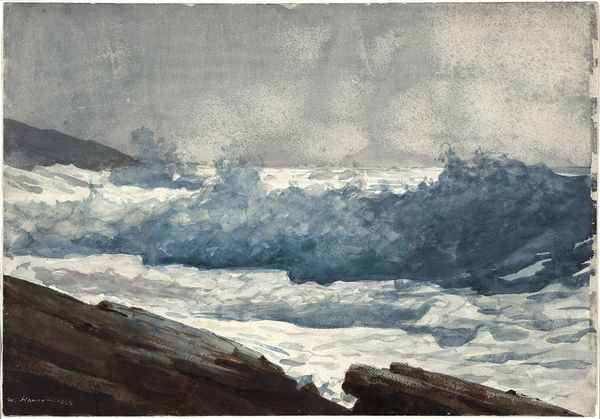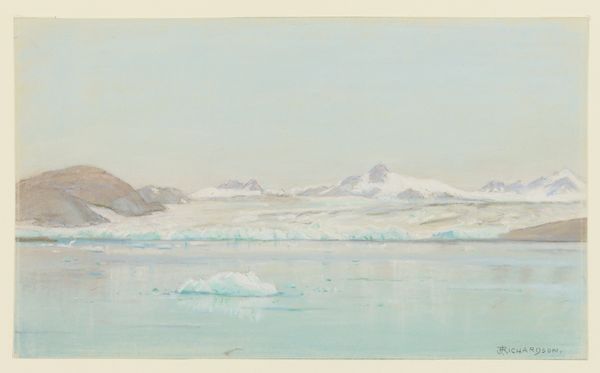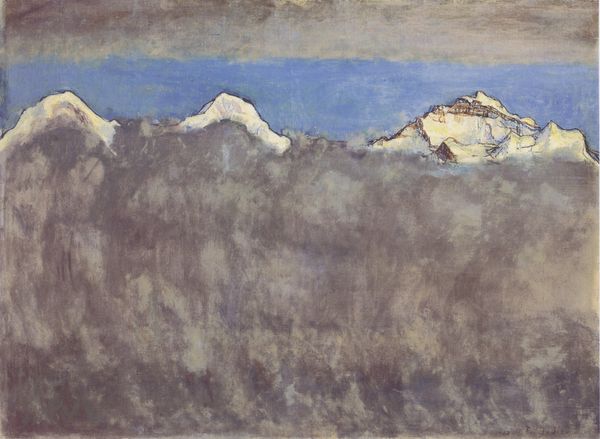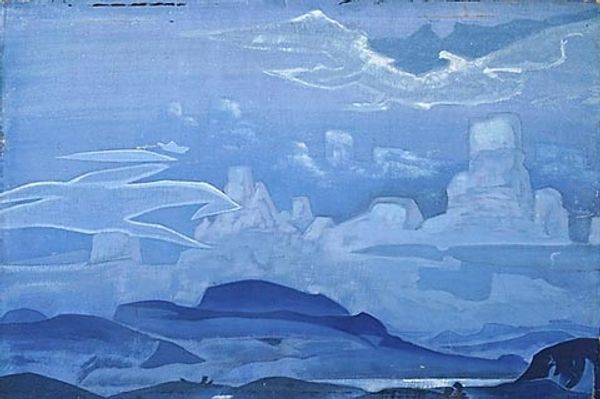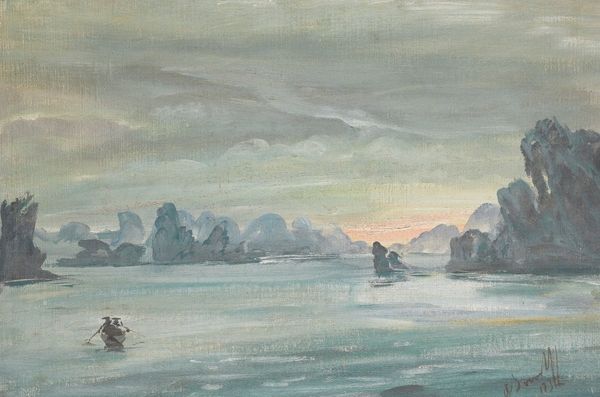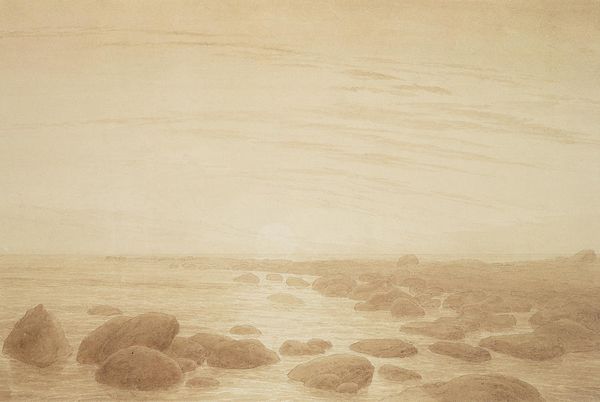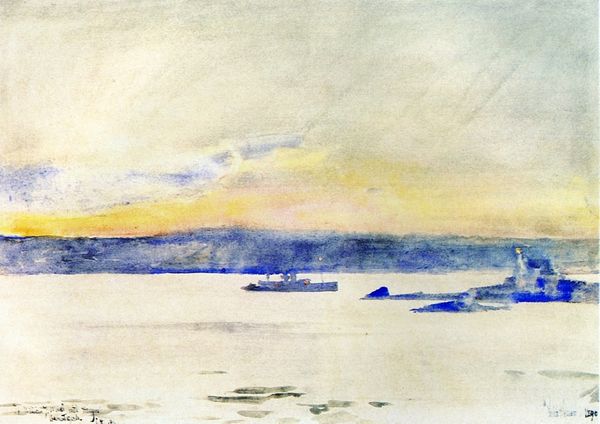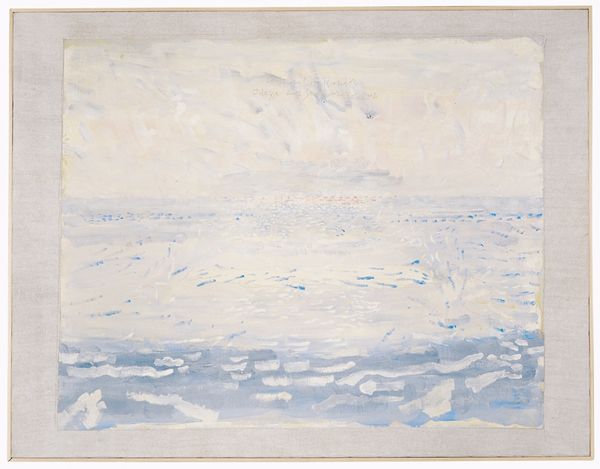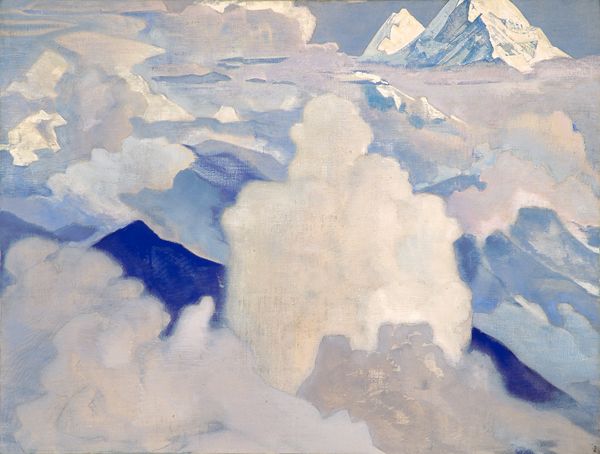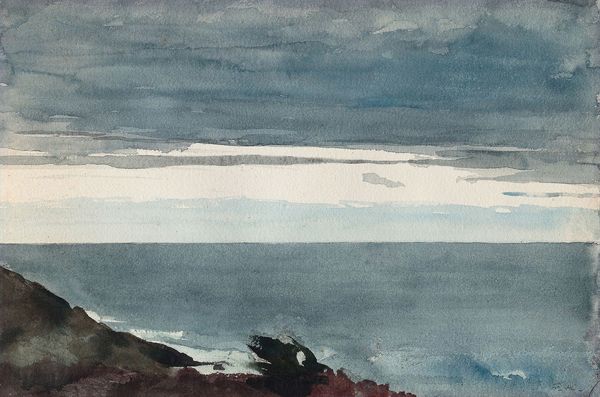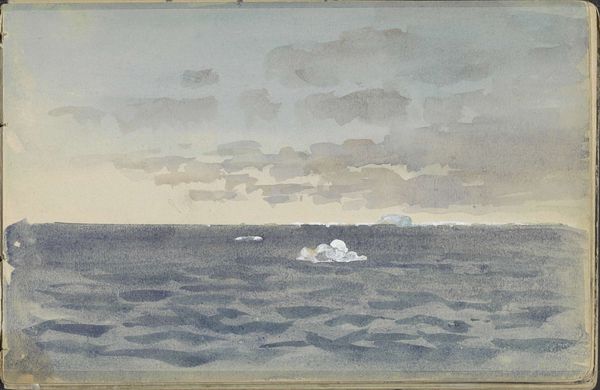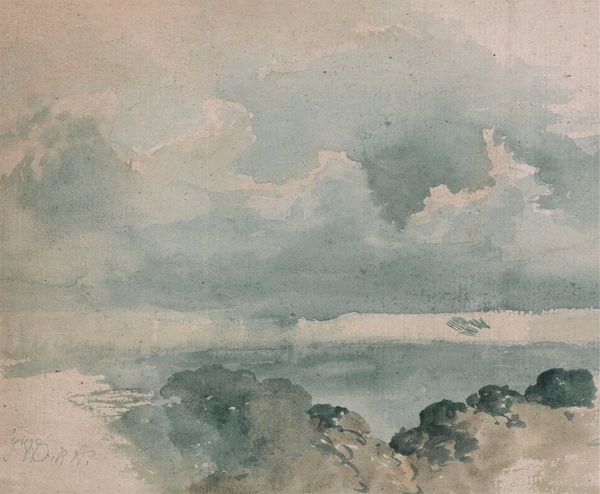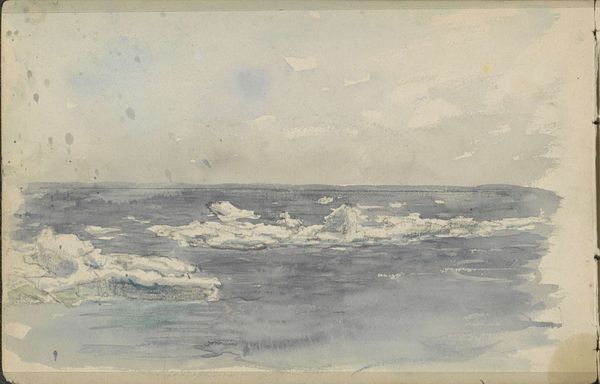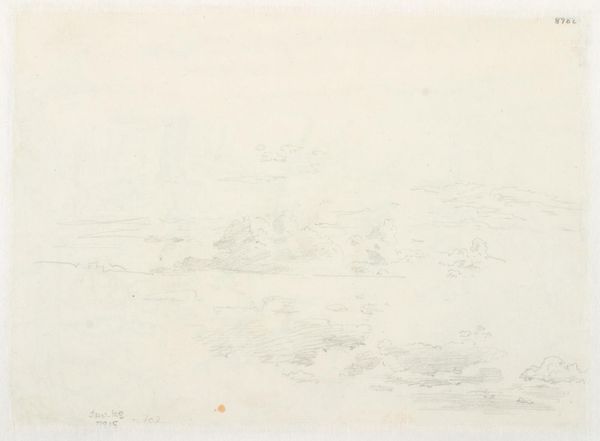
Copyright: Public domain
Editor: This is “Eislandschaft auf Grönland,” or “Ice Landscape in Greenland,” painted by Richard Friese in 1911, using oil paint. It’s so subtle and delicate, almost monochromatic. What strikes me most is the flatness and the visible canvas texture. How do you read this piece? Curator: I notice the directness in Friese's application of oil paint on that canvas. There's minimal blending, and you can practically trace the movements of the brush. Consider this in terms of the availability and expense of materials at the time. Was Friese working quickly, perhaps *en plein air* as some scholars suggest, because of the environment, or were the quick strokes to do with economic needs. What impact does that have on the consumption and market value? Editor: That’s interesting. I hadn’t thought about the economics. I assumed it was just stylistic, evoking the starkness of the landscape. Curator: Precisely, the artist is negotiating a relationship with material realities while crafting the experience of this environment for a certain viewing audience. This also impacts value judgements and traditional art. How do the processes of landscape oil painting challenge or blur established notions of labor, skill, and consumption? Editor: So you're saying that by examining the material conditions and processes, we can unpack broader social and even economic issues related to the art. It seems to raise interesting questions about what we value. Curator: Exactly. Understanding those factors can really deepen our appreciation, and make us reconsider any initial assumptions about why and how it was made. Editor: That’s a helpful new perspective. I never would have considered this much. Curator: Focusing on production unveils previously unnoticed factors that form our experience. It enriches it, doesn't it?
Comments
No comments
Be the first to comment and join the conversation on the ultimate creative platform.
